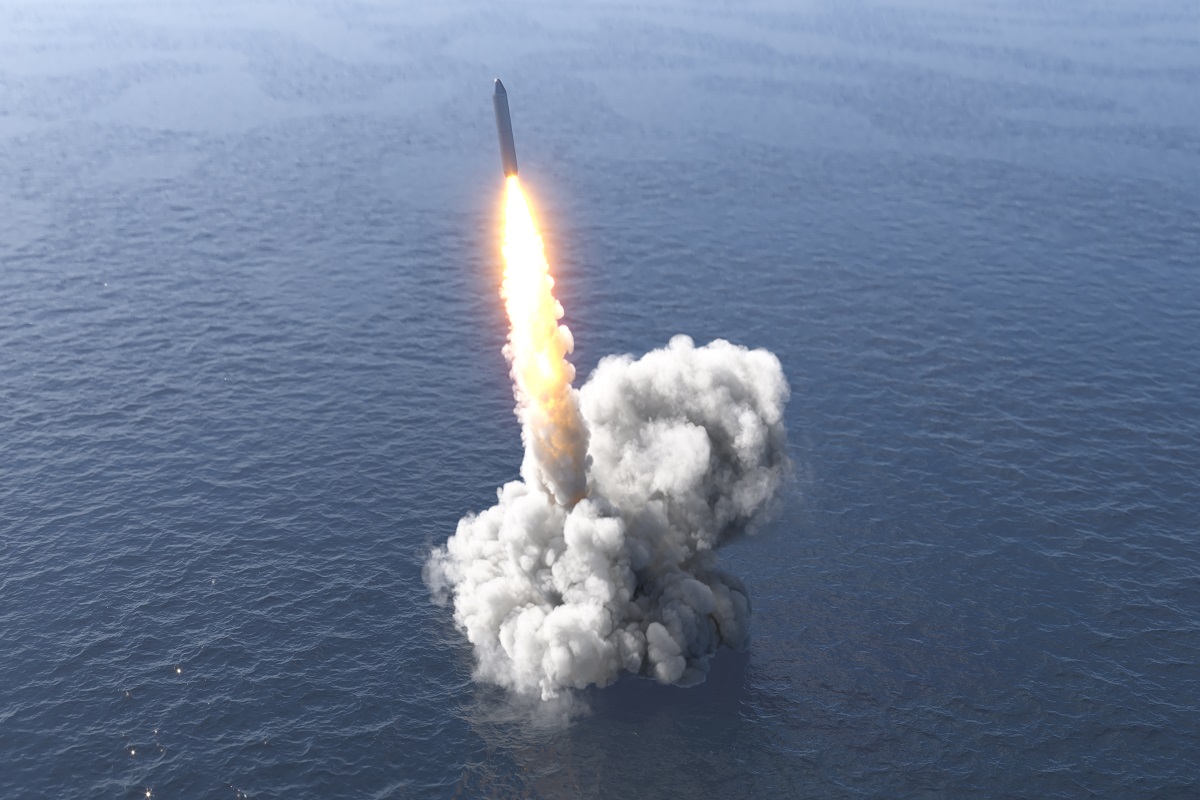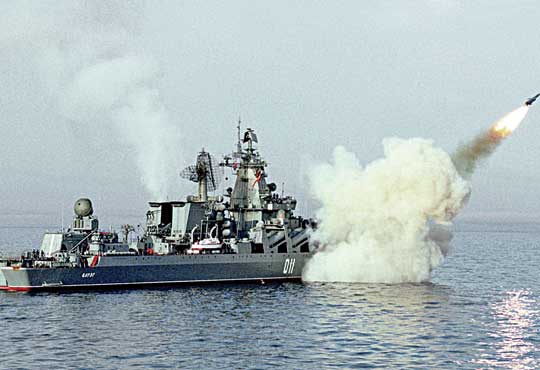
Carrier Killers Vol. one

Missile cruiser Moskva (formerly Slava), the flagship of the Black Sea Fleet of the Russian Federation, current view. The dimensions of the unit, and in particular the “batteries” of the Bazalt rocket launcher, impress non-specialists, but it’s no secret to anyone that the ship and its weapons systems were designed for use in completely different realities than modern ones. With modern air defense systems, the Project 1164 cruisers and their main armament today are simply “paper tigers”.
The naval forces of the Russian Federation are now a shadow of the former might of the Soviet Navy. Despite the efforts of the shipbuilding industry and manufacturers of naval armaments, Moscow can now afford the maximum mass construction of corvettes, although not the most efficient. Economic sanctions, cut-off from cooperators and disruption of the supply chain from the former Soviet republics - mainly Ukraine, the lost experience of design bureaus, the lack of shipyards with the appropriate technical base, or, finally, the lack of funds, are forcing the Kremlin authorities to look after these large ships of the past era, miraculously surviving currently.
Modern navies have moved away from cruiser-class ships. Even the US Navy has withdrawn some of the Ticonderoga-class units, which are still inferior in size to the latest Arleigh Burke-class destroyer variants. A somewhat "random" three large Zumwalt-class destroyers of 16 tons could have been classed as cruisers, but this did not happen. His figures only confirm the thesis at sunset of very large combat units (we are not talking about aircraft carriers, because there are none).
In the case of Russia, which retains obsolete units of this class, the nuclear-powered Project 1144 Orlan, or their gas turbine counterparts with a smaller displacement, Project 1164 Atlant ships of a similar size, optimal for ocean operations and flag flying. Therefore, a large-scale modernization of “Admiral Nakhimov” (ex-Kalinin) is being carried out according to project 11442M, which is preceded by a renovation necessary for the movement of the unit on its own ... Of course, new designs of weapons and electronics, including a very “media” missile system 3K14 “Caliber-NK ". On the other hand, the three Project 1164 cruisers are in better shape and, being cheaper to operate and maintain, still attract the attention of potential opponents, but already because of their size, and not their real combat value.
The appearance in the Navy of the missile cruisers of the Soviet Union, armed with guided anti-ship missiles, was associated with the need to effectively fulfill one of its main tasks - the need to destroy aircraft carriers and other large surface ships "potential enemy" as quickly as possible in case of war is a term used to describe the United States and its NATO allies.
It was this priority that was set in the mid-50s when then-Soviet leader Nikita Khrushchev called American aircraft carriers "floating airfields of aggression." Since the USSR could not, due to its economic weakness and technical and industrial backwardness, fight them with the help of its own aviation, an asymmetric response was chosen in the form of the development of long-range sea anti-ship missiles and their surface and underwater carriers.

The Varyag (formerly Krasnaya Ukraina) fires a 4K80 P-500 Bazalt anti-mole missile, the main weapon of the "aircraft carrier killers". According to some research, the Wariaga was armed with the newer P-1000 Wulkan system.
Soviet way to the missile cruiser
The above circumstances, as well as the absolutization by the Soviet military-political leadership of the capabilities of missile weapons, led to the fact that they began to be intensively developed in the USSR in the 50-60s. New design bureaus and production enterprises were created, which began to develop new missile systems with a very wide range of applications, including, of course, for the VMU.
Except for the re-equipment in 1955 of the artillery cruiser design 68bis Admiral Nakhimov under project 67EP into a test ship equipped with an experimental launcher that allows you to launch KSS missile aircraft, the first Soviet surface ship carrying anti-missile defense. - the destroyer of the project was a ship-guided anti-ship weapon.56
This ship was converted in 1958 into a missile unit under project 56E, and then 56EM, at the Shipyard named after. 61 Communards in Nikolaev. By 1959, the fleet received three more missile destroyers, rebuilt according to a slightly modified project 56M.
As in the case of the Bedovs, their main armament was a single rotary launcher SM-59 (SM-59-1) with a truss rail for firing anti-ship missiles 4K32 "Pike" (KSSzcz, "Ship projectile pike") R-1. the Strela system and a store for six missiles (in combat conditions, two more could be taken - one placed in a warehouse, the other at a pre-launch KP, agreeing to the deterioration of the safety and conditions for preparing missiles for launch).
After the commissioning in 1960-1969 of eight larger Project 57bis destroyers, built from scratch as missile carriers, with two SM-59-1 launchers and twice the missile capacity of Project 56E/EM/56M, the Soviet Navy consisted of 12 missile destroyers (since May 19, 1966 - large missile ships) capable of striking large enemy surface targets outside the zone of destruction of his fire weapons (of course, except for airborne aircraft).
However, soon - due to the rapid aging of the KSSzcz missiles (borrowed from German developments during World War II), low rate of fire, a small number of missiles in a salvo, high fault tolerance of equipment, etc. The 57bis series of ships was discontinued. Taking into account the dynamic development in the USA and NATO countries of modern shipborne air defense systems, including missile defense, a large and outdated KSSzch, requiring a nine-minute reloading of the launcher and preparing it for re-firing (pre-launch control, wing assembly, refueling, setting on a guide, etc. d.), there was no chance of successfully hitting a target in combat conditions.
Another series of surface ships designed to combat aircraft carriers were Project 58 Grozny missile destroyers (since September 29, 1962 - missile cruisers), armed with two SM-70 P-35 anti-ship missiles quad launchers, also driven by liquid fuel turbojet engine, but capable of long-term storage in a fueled state. The warhead consisted of 16 missiles, eight of which were in launchers, and the rest in stores (four per launcher).
When firing in a salvo of eight R-35 missiles, the probability of hitting at least one of them on the main target in the attacked group of ships (aircraft carrier or other valuable ship) significantly increased. Nevertheless, due to numerous shortcomings, including the weak defensive armament of the Project 58 cruisers, the series was limited to four ships (out of 16 originally planned).
Units of all these types also suffered from one, but a fundamental drawback - their autonomy was too small for long-term tracking of the strike group with an aircraft carrier during its patrol, especially if it was necessary to escort a nuclear aircraft carrier for several days in a row making a retreat maneuver. . This was far beyond the capabilities of destroyer-sized missile ships.
The main area of rivalry between the fleets of the USSR and NATO in the 60s was the Mediterranean Sea, where the 14th Operational Squadron of the VMP (Mediterranean) operated from July 1967, 5, consisting of 70–80 ships from among the ships of the Black Sea, Baltic and Northern fleets. Of these, about 30 warships: 4-5 nuclear submarines and up to 10 diesel-electric submarines, 1-2 ship strike groups (in case of aggravation of the situation or more), a trawl group, the rest belonged to the security forces (workshop, tankers, sea tugs, etc.) .
The US Navy included the 6th Fleet in the Mediterranean Sea, created in June 1948. In the 70-80s. consisting of 30-40 warships: two aircraft carriers, a helicopter, two missile cruisers, 18-20 multi-purpose escort ships, 1-2 universal supply ships and up to six multi-purpose submarines. Typically, one carrier strike group operated in the Naples area, and the other in Haifa. If necessary, the Americans transferred ships from other theaters to the Mediterranean. In addition to them, there were also warships (including aircraft carriers and nuclear submarines), as well as land-based aircraft from other NATO countries, including Great Britain, France, Italy, Greece, Turkey, Germany and the Netherlands. actively working in this area.
